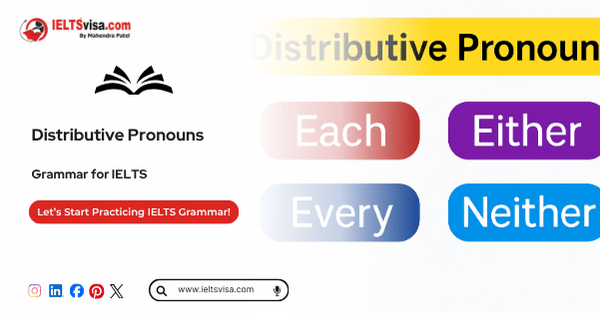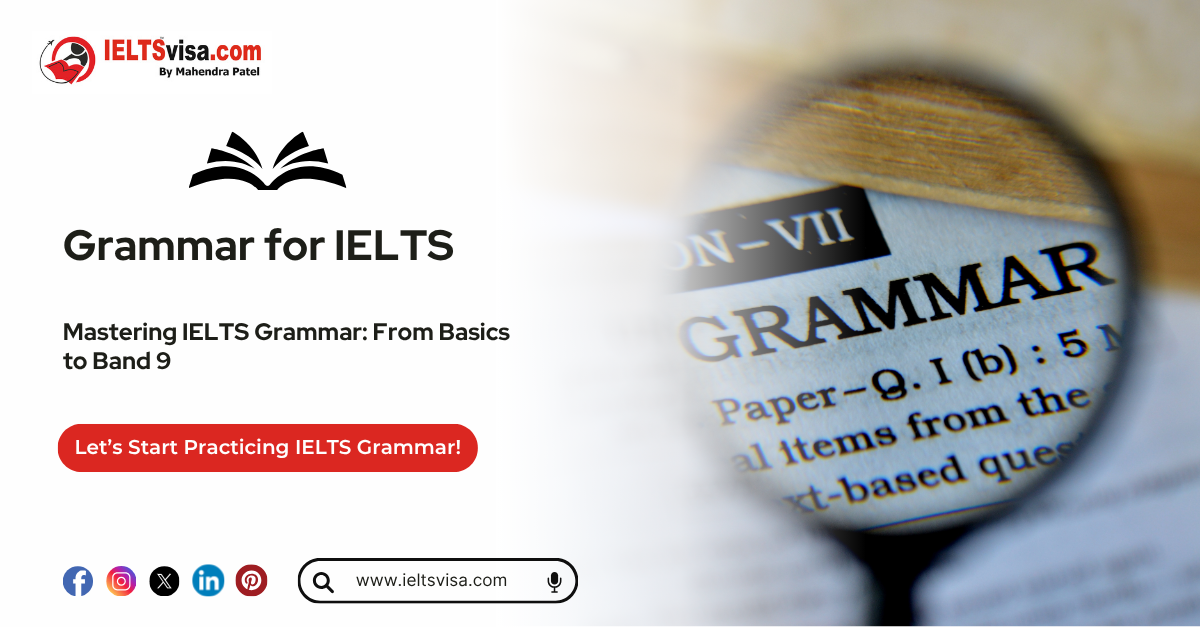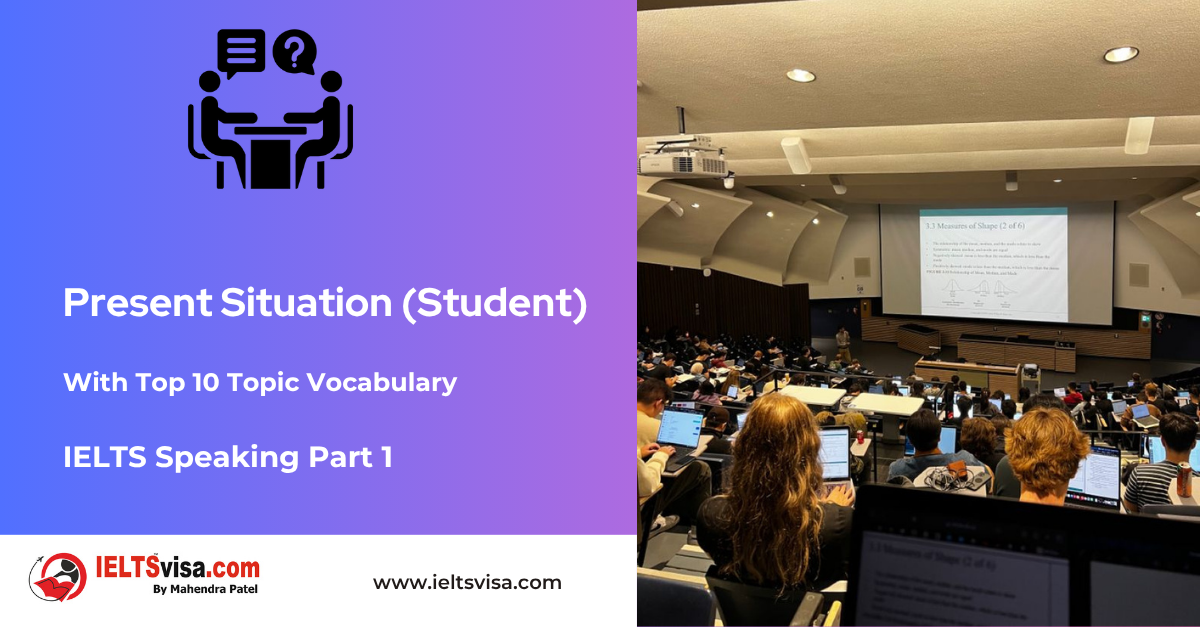Distributive Pronouns
Grammar for IELTS

Distributive Pronouns: Definition, Examples, and Usage
The English language is full of fascinating grammatical tools that help convey meaning precisely. Among the many types of pronouns, distributive pronouns play a unique role. These pronouns are used to refer to individual members of a group rather than the group as a whole, emphasising each member separately.
This guide will help you understand what distributive pronouns are, how they are used in sentences, and how to differentiate them from other types of pronouns.
Table of Contents
1. What Are Distributive Pronouns?
2. Definition of Distributive Pronouns
3. Examples of Distributive Pronouns
4. Rules for Using Distributive Pronouns
5. Commonly Confused Terms
-
-
-
- Distributive Pronouns vs. Distributive Adjectives
- Distributive Pronouns vs. Indefinite Pronouns\
-
-
6. Practice Exercises
7. Frequently Asked Questions
What Are Distributive Pronouns?
Distributive pronouns are used to refer to individual members of a group rather than referring to the group collectively. They are especially useful when discussing choices, alternatives, or individuals within a group.
For example:
-
- Each of the students submitted their assignment.
- Neither of the answers is correct.
In these sentences, each and neither emphasise individual members of the group.
Definition of Distributive Pronouns
A distributive pronoun is defined as a pronoun that refers to one or more individuals or items within a group, but not collectively. These pronouns often indicate individual treatment or consideration within the group.
Examples include each, either, neither, none, any, no one.
Examples of Distributive Pronouns
Here are some examples to help you understand how distributive pronouns work:
|
Distributive Pronoun |
Example |
|
Each |
Each of the players received a trophy. |
|
Either |
Either of the roads will take you to the city centre. |
|
Neither |
Neither of the solutions works for this problem. |
|
None |
None of the participants completed the race. |
|
Any |
Any of these books can be used for the project. |
|
No one |
No one in the group knew the correct answer. |
Rules for Using Distributive Pronouns
1. Always Followed by a Singular Verb
Distributive pronouns are treated as singular, even when referring to a group.
-
- Each of the employees is responsible for their work.
- Neither of the options is feasible.
2. Used for Specific or Definite Groups
Use each when referring to a small and definite group. Use every for a larger or indefinite group.
-
- Each of the students has submitted their report.
- Every person in the crowd was cheering.
3. Singular Pronoun or Verb Usage
Distributive pronouns require singular possessive pronouns or verbs.
-
- None of the dogs has been fed yet.
- Neither of them is available today.
Commonly Confused Terms
Distributive Pronouns vs. Distributive Adjectives
|
Aspect |
Distributive Pronouns |
Distributive Adjectives |
|
Function |
Replaces a noun in a sentence |
Modifies a noun in a sentence |
|
Example |
Each of the students received an award. |
Each student received an award. |
|
Followed by |
Plural noun, singular verb or pronoun |
Singular noun |
Distributive Pronouns vs. Indefinite Pronouns
|
Aspect |
Distributive Pronouns |
Indefinite Pronouns |
|
Refers To |
Individual members of a group |
Non-specific persons or things |
|
Example |
Either of the paths leads to the same destination. |
Someone left their jacket behind. |
Practice Exercises
Fill in the blanks with the correct distributive pronouns:
1. _________ of the students has their own locker.
2. The manager said that _________ of the solutions was effective.
3. _________ of you is allowed to enter the restricted area.
4. _________ of the options seem appealing to me.
5. _________ of the animals was brought to the shelter.
Answers:
1. Each
2. Neither
3. None
4. None
5. Either
Frequently Asked Questions
Q1: What is a distributive pronoun?
A distributive pronoun is a pronoun that refers to individual members of a group, one at a time, rather than the group as a whole.
Q2: What are examples of distributive pronouns?
Examples include: “each,” “either,” “neither,” “none,” “any,” and “no one.”
Q3: How are distributive pronouns different from distributive adjectives?
Distributive pronouns replace a noun, while distributive adjectives modify a noun.
Q4: Can distributive pronouns be used for large groups?
Yes, but the choice of the pronoun (e.g., each vs. every) depends on whether the group is definite or indefinite.

Our Books
Master IELTS Speaking Part 1
IELTS Writing Task 1 Book
IELTS Writing Task 2 Book
Practice IELTS Other Modules
IELTS Listening
The IELTS Listening test assesses how well you can understand spoken English in various contexts. It lasts about 30 minutes and is divided into four sections with a total of 40 questions. The listening tasks become increasingly difficult as the test progresses.
IELTS Academic Reading
The IELTS Academic Reading section assesses your ability to understand and interpret a variety of texts in academic settings. It is designed to evaluate a range of reading skills, including skimming for gist, reading for main ideas, reading for detail, understanding inferences, and recognizing a writer's opinions and arguments.
IELTS Speaking
The IELTS Speaking test assesses your ability to communicate in English on everyday topics. It lasts 11-14 minutes and consists of three parts: introduction, cue card, and a discussion based on the cue card topic.
IELTS General Reading
IELTS General Reading tests your ability to understand and interpret various types of texts. Here are some key areas and types of content you can expect to encounter in the reading section, along with tips for effective preparation.
IELTS Academic Writing Task 1
In IELTS Academic Writing Task 1, you are presented with a visual representation of information, such as graphs, charts, tables, or diagrams, and you are required to summarize, compare, or explain the data in your own words.
IELTS General Writing Task 1
In IELTS General Writing Task 1, you are required to write a letter based on a given situation. The letter can be formal, semi-formal, or informal, depending on the prompt. Here’s a breakdown of the key components to include in your letter
IELTS Academic Writing Task 2
In IELTS Academic Writing Task 2, you are required to write an essay in response to a question or topic. Here’s a guide to help you understand the essential elements of this task
IELTS Exam Tips
To succeed in the IELTS exam, practice regularly, familiarize yourself with the test format, improve your vocabulary, develop time management skills, and take mock tests to build confidence.
Grammer for IELTS
Grammar is the foundation of effective communication in English. Understanding tense usage, subject-verb agreement, and sentence structure enhances clarity and coherence in writing and speaking.
Vocabulary for IELTS
Vocabulary plays a crucial role in the IELTS (International English Language Testing System) exam, especially in the Speaking and Writing sections. Here’s an overview of why vocabulary is important and how it impacts your performance
RECENT IELTS SAMPLES QUESTIONS AND ANSWERS
IELTS Speaking Part 1 – Favourite Sujbect – Physics
IELTS Speaking Part 1 - Favourite Sujbect - Physics Q: What is your favourite subject? A: My favourite subject...
IELTS Speaking Part 1 – Present Situation (Student)
IELTS Speaking Part 1 - Present Situation (Student) Q1: Are you a student or do you work?A: I’m a full-time...
IELTS Speaking Part 1 – Present Situation – Employee – as an International Student and Social Worker
IELTS Speaking Part 1 - Present Situation - Employee - as an International Student and Social Worker Q1: Are...
IELTS Speaking Part 1 – Persent Situation – Employee- as an Electric Engineer
IELTS Speaking Part 1 - Persent Situation - Employee- as an Electric Engineer Q1: What do you do for a...
IELTS Speaking Part 1 – Persent Situation – Employee – as an Software Engineer
IELTS Speaking Part 1 - Persent Situation - Employee - as an Software Engineer Q1: What do you do for a...
IELTS Speaking Part 1 – Persent Situation – Married
IELTS Speaking Part 1 - Persent Situation - Married Q1: Are you married?A: Yes, I am married. My spouse and I...













